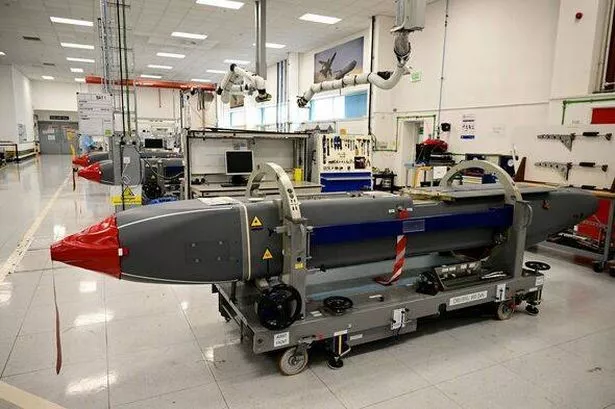World
Ukraine Strikes Russian Chemical Facility with Storm Shadow Missiles

Ukraine launched a substantial missile attack against a chemical facility in Russia’s Bryansk region using British-made Storm Shadow cruise missiles. This operation occurred late on March 15, 2024, and marks a significant escalation in Ukraine’s efforts to target facilities supporting Russia’s military operations. The Ukrainian military reported that these long-range missiles successfully penetrated Russian air defenses, hitting a plant suspected of producing vital materials for the ongoing conflict.
The attack was coordinated by Ukraine’s Air Force in collaboration with its Navy and Land Forces. According to the General Staff of the Armed Forces of Ukraine, “A massive combined missile-and-air strike was carried out, including air-launched Storm Shadow missiles that penetrated Russia’s air defense system.” This facility is described as a “key facility” for manufacturing gunpowder, explosives, and rocket fuel used by Russian forces in their assaults on Ukraine.
Video evidence revealed a significant fire raging at the industrial complex following the strike. In response, Alexander Bogomaz, the governor of Bryansk Oblast, reported on the messaging platform Telegram that Ukraine targeted the region with drones and missiles. He stated that, as of now, there were no injuries or damage reported, although it is important to recognize that Russia typically downplays the impact of Ukrainian attacks.
The Russian Defense Ministry claimed to have intercepted 57 Ukrainian drones over the region in a four-hour period, asserting that their air defenses were effective. The Storm Shadow missile, developed by MBDA, boasts an impressive range of up to 155 miles. It is designed to fly close to the ground at speeds approaching 600 mph, guided by GPS before detonating a 990-pound high-explosive warhead. Each missile costs approximately $1 million (£767,000), making them a strategic asset in Ukraine’s military arsenal.
Ukraine first deployed Storm Shadow missiles against Russian targets in late 2022, following approval from the United Kingdom and the United States for the use of long-range munitions. This latest attack comes on the heels of intensified military actions, including a severe overnight assault on Kyiv and other Ukrainian regions. Kyiv Mayor Vitali Klitschko reported that this assault involved multiple missile and drone attacks, igniting fires across various districts.
The missile strikes on Kyiv included at least four ballistic missiles, resulting in the tragic loss of six lives, including a six-month-old infant and a 12-year-old girl. The attacks also caused widespread power outages due to damage to energy infrastructure and residential buildings.
In a related development, the White House announced the cancellation of planned discussions between Russian President Vladimir Putin and former U.S. President Donald Trump in Hungary, following Russia’s refusal to modify its “maximalist” demands. This unfolding situation highlights the continued volatility in the region and the escalating military engagements between Ukraine and Russia.
-

 Lifestyle5 months ago
Lifestyle5 months agoLibraries Challenge Rising E-Book Costs Amid Growing Demand
-

 Sports4 months ago
Sports4 months agoTyreek Hill Responds to Tua Tagovailoa’s Comments on Team Dynamics
-

 Sports4 months ago
Sports4 months agoLiverpool Secures Agreement to Sign Young Striker Will Wright
-

 Lifestyle4 months ago
Lifestyle4 months agoSave Your Split Tomatoes: Expert Tips for Gardeners
-

 Lifestyle4 months ago
Lifestyle4 months agoPrincess Beatrice’s Daughter Athena Joins Siblings at London Parade
-

 Science4 months ago
Science4 months agoSan Francisco Hosts Unique Contest to Identify “Performative Males”
-

 World4 months ago
World4 months agoWinter Storms Lash New South Wales with Snow, Flood Risks
-

 Science5 months ago
Science5 months agoTrump Administration Moves to Repeal Key Climate Regulation
-

 Business5 months ago
Business5 months agoSoFi Technologies Shares Slip 2% Following Insider Stock Sale
-

 Science5 months ago
Science5 months agoNew Tool Reveals Link Between Horse Coat Condition and Parasites
-

 Sports4 months ago
Sports4 months agoElon Musk Sculpture Travels From Utah to Yosemite National Park
-

 Science5 months ago
Science5 months agoNew Study Confirms Humans Transported Stonehenge Bluestones









